WordPress out of the box is very secure. However, if you suspect that something is not right with your website, then you may want to perform a complete security audit to make sure that your website is secure.
In this article, we’ll show you how to easily perform a WordPress security audit without taking down your site.
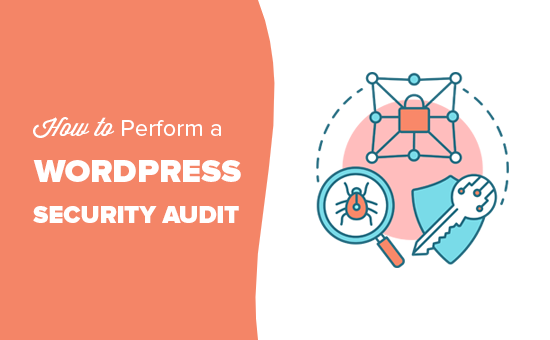
What is a WordPress Security Audit?
WordPress security audit is the process of checking your website for signs of a security breach. You can perform a WordPress check to look for suspicious activity, malicious code, or an unusual drop in performance.
The basic WordPress security contains simple steps that you can perform manually.
For a more thorough audit, you can use a WordPress security audit tool to automatically perform the checks for you.
There are also online WordPress security audit services that you can use to evaluate your website’s security.
If you find something suspicious, then you can isolate, remove, and fix it.
When to Perform a WordPress Security Audit?
You should perform a WordPress security audit at least once a quarter. This allows you to stay on top of everything and close security loopholes even before they cause any trouble.
However if you see something suspicious, then you should perform a security audit immediately.
The following are some of the signs which indicate that you may need a security audit.
- Your website is suddenly too slow and sluggish
- You witness a drop in website traffic
- There are suspicious new accounts, forgot password requests, or login attempts on your website
- You see suscpious links appear on your website
That being said, let’s take a look at how to easily perform a WordPress security audit on your website.
WordPress Security Audit Checklist
The following are some of the steps you can take to perform a basic WordPress security audit on your website.
1. Software updates
WordPress updates are really important for the security and stability of your website. They patch security vulnerabilities, bring new features, and improve performance.
Make sure your WordPress core software, all plugins, and themes are up to date. You can easily do that by visiting Dashboard » Updates page inside WordPress admin area.
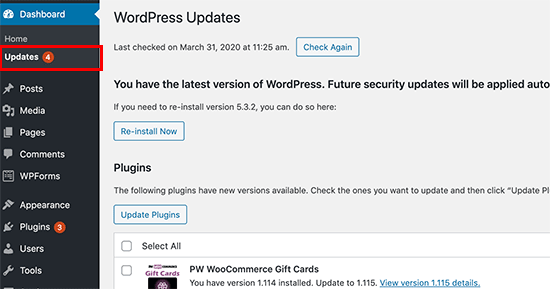
WordPress will look up if any updates are available and then list them for you to install. If you need more help, then see our guides on how to properly update WordPress and how to properly update WordPress plugins.
2. Check user accounts and passwords
Next, you need to review WordPress user accounts by visiting Users » All Users page. You’ll be looking for suspicious user accounts that shouldn’t be there.
If you run an online store, a membership site, or sell online courses, then you may have user accounts for your customers to sign in.
However, if you run a blog or a business website, then you should only see user accounts for yourself, or any other user that you have manually added.

If you see suspicious user accounts, then you need to delete them.
Now if your website doesn’t require users to create an account, then you need to visit Settings » General page and make sure that the box next to the ‘Anyone can register’ option is unchecked.
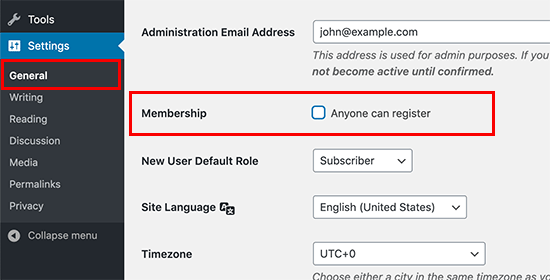
As an extra precaution, you need to change your WordPress admin password. We highly recommend adding two-factor authorization to strengthen password security on your website.
3. Run a WordPress security scan
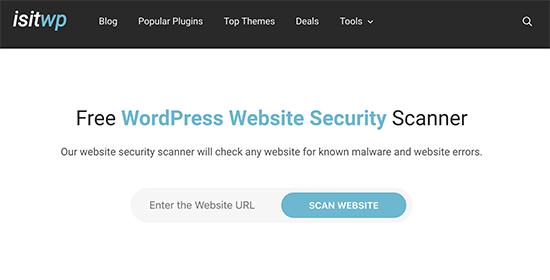
The next step is to check your website for security vulnerabilities. Luckily, there are several online security scanners that you can use to check for malware.
We recommend using IsItWP Security Scanner which checks your website for malware and other security vulnerabilities.
These tools are good, but they can only scan the public-facing pages of your website. We’ll show you how to perform deeper audits later in this article.
4. Check your website analytics
Website analytics help you keep track of your website traffic. They are also a pretty good indicator of your website’s health.
If your website has been blacklisted by search engines, then you’ll see a sudden drop in your website traffic. If your website is slow or unresponsive, then your overall page views will also drop.
We recommend using MonsterInsights to track your website traffic. It not only shows your overall pageviews, but you can also use it to track registered users, your WooCommerce customers, form conversions and more.
5. Check or set up WordPress backups
If you haven’t already done so, then you need to immediately set up a WordPress backup plugin. This ensures that you always have a back up available in case anything goes wrong.
On the other hand, many beginners forget about their WordPress backup plugin after setting it up. Sometimes backup plugins may stop working without any notice. It is a good idea to make sure that your backup plugin is still working and saving backups.
Automatically Perform WordPress Security Audit
The above checklist allows you to go through the most important aspects of a security audit. However, it is not a very thorough process which means your website may still be vulnerable.
For instance, it is difficult to keep a manual record of all user activity, file differences, suspicious codes, and more. This is where you need a plugin to automate security auditing and keeping a record of everything.
You can automate this process with the help of a few WordPress security and monitoring plugins.
1. WordPress Security Audit Log
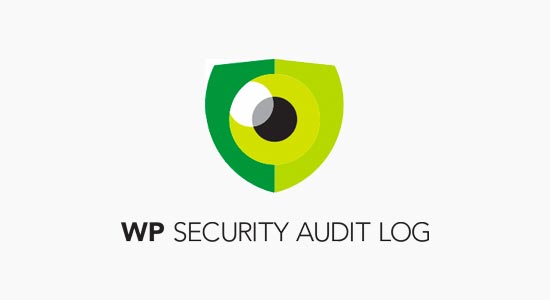
WordPress Security Audit Log is the best WordPress activity monitoring pluginon the market.
It allows you to keep track of all user activity on your website. You can view all user logins, IP addresses, and what they did on your website.
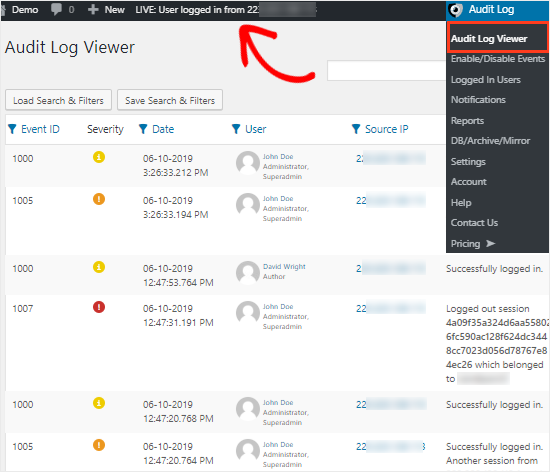
You can track WooCommerce users, editors, authors, and other members who have an account on your website.
You can also turn on events that you want to track and switch-off events that you don’t want to monitor.
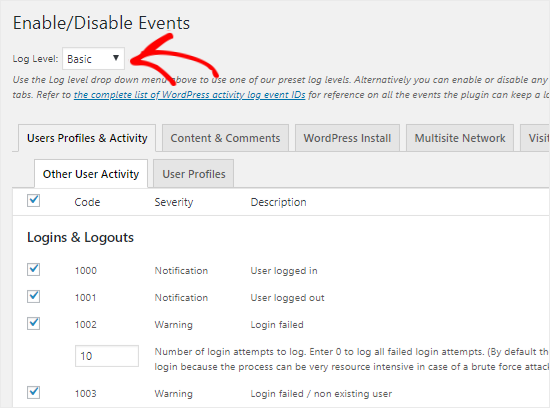
The plugin also shows you a live view of all the users logged in to your website. If you see a suspicious account, then you can end their session right away and lock them out.
For more details, see our guide on how to monitor user activity in WordPressusing WP Security Audit log.
2. Sucuri

Sucuri is the best WordPress firewall plugin on the market, and it is also the best all-in-one WordPress security solution that you can get for your website.
It provides real-time protection against DDoS attacks by blocking suspicious activity even before it reaches your website. This removes load from your server and improves your website speed / performance.
It comes with a built-in security plugin that checks your WordPress files for suspicious code. You also get a detailed look at the user activity across your website.
Most importantly, Sucuri offers malware removal for free with all their paid plans. This means, that even if your website is already affected, their security experts will clean it for you.
We hope this article helped you learn how to perform a WordPress security audit on your website. You may also want to see our complete WordPress security guide for step by step instructions on how to protect your website.
